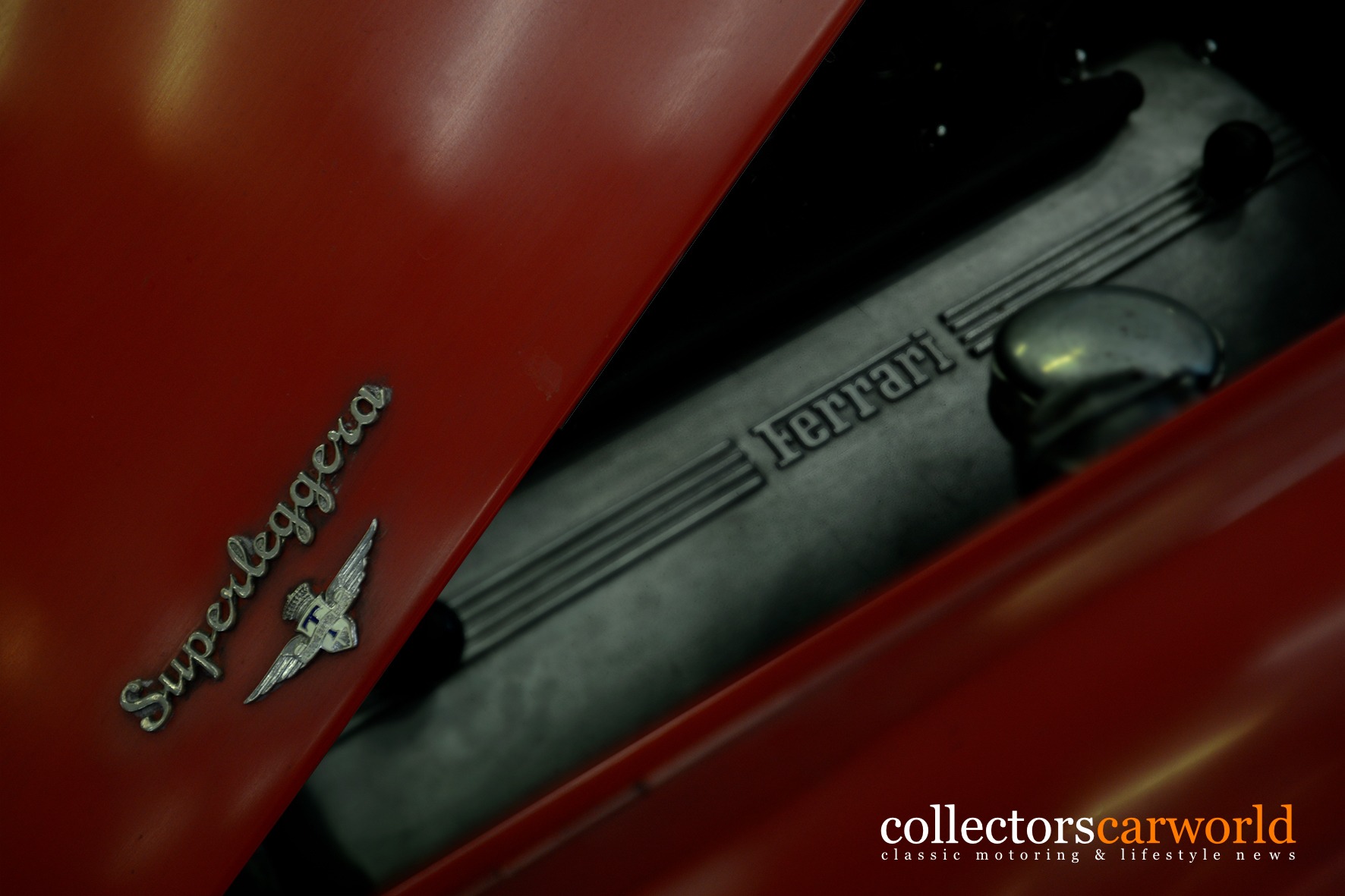The 166 MM Touring Barchetta was the car that made 1949 very special for the young Scuderia Ferrari and started the story of success for Enzo Ferrari.
At his presentation in Torino in September 1948 the 166 MM, the letters stand for Mille Miglia, the spectators were very impressed about the beautiful design and the rounded shape with its fine lines.

Nobody could imagine how well this race car was able to perform in the heat of competition in 1949. The success came very fast. At the first main event in April 1949, the iconic Mille Miglia, two 166 MM finished first and second overall. Then Luigi Chinetti won the most important race of the season, the 24 hours of Le Mans. It was the first victory for the Scuderia Ferrari, many more should come thereafter. Only a few weeks later, at the 24 Hours of Spa Francorchamps Luigi Chinetti took another win.
These three world class performances established the excellence and reputation of Ferrari. The Prancing Horse was on the fast lane. It was the beginning of Ferrari’s racing history and the birth of the myth with all the upcoming legends and stories.

The 166 MM Barchetta was a fabulous race car, strong and reliable. And it was state-of-the-art in 1949. The most legendary car is of course the Number 22 with the chassis number 0008M. This is the Mille Miglia and Le Mans winning car from Luigi Chinetti of 1949.
You have to remember that in this era long-distance-races as the Mille Miglia and the 24h of Le Mans were much more important than the Formula One. So the success of the great 166 MM Barchetta was very important for the young company and for Enzo Ferrari.
It helped Enzo Ferrari a lot to sell road cars, which he only did to finance the racing activities on the most important tracks all over the world. This had a great impact to the level of awareness in the world of motor racing. From this year on everyone knew that there is a small manufacture in Maranello, which is building the fastest race cars.
The 166 MM Barchetta was produced between 1949 and 1953. In total 46 cars were built, most of them as a race cars. The bodywork came from the Carrozzeria Touring Milano for the first cars, later on there were versions by Vignale, Pininfarina and some others. The first series created 125hp at 7000rpm from the 12 cylinder Colombo engine, than Series Two got a stronger but also heavier 12 cylinder with 160hp. The wheelbase was 2250 mm during the whole time of production.

In total the 166 MM Barchetta took thirty one overall winnings and forty-three class winnings between 1949 and 1953. The first race was the Targa Florio in 1949 with Franco Cortese, but he wasn’t able to finish. The last race was the Grand Prix of Leopoldville in 1959 with Sebastião Gouveia.
But the first and maybe most important winning was the Mille Miglia 1949. The first place took Biondetti / Salani with the starting number 624 after 12:07:05.00 hours for the 1602,907 km with an average speed of 131,180 km/h in front of the second 166 MM Barchetta of the Scuderia Ferrari with Bonetto / Carpani in 12:35:07.000 hours. The starting number of this car was the 641.

Alberto Ascari had won the Grand Prix of Luxembourg two times in row in 1950 and 1951. The last victory for a 166 MM Barchetta was in 1957 at the Grand Prix of Roskilde in Denmark by Jean Blaton. Not that bad for a car which was build 8 years before.
Maybe you may ask why this car is called „Barchetta“? Barchetta is the italian word for a little boat, and the shape of the car looks a bit like this.
Finally, in my opinion, the Ferrari 166 MM Barchetta made the birth of the whole legend and myth of the Scuderia Ferrari and it influenced many sports cars like the AC Ace , the Shelby Cobra , the Siatas or other aluminium roadsters of the 50’s and 60’s.
FERRARI 166 MM BARCHETTA: TECHNICAL SPECIFICATION
MODEL 166 MM
TYPE Barchetta / Race Car
YEAR OF PRODUCTION 1949 – 1953
TOTAL NUMBER OF BUILD CARS 46 items
ENGINE V12 cylinder, 60˚ front mounted
CARBURATOR 3 Weber 32 IF4/C
CUBIC CAPACITY 1995 cc
TRANSMISSION 5-speed, not synchronized
HORSEPOWER 125 hp at 7000 rpm / 160 hp at 7200 rpm
BODY STYLE Tubed frame
WHEELBASE 2250 mm
BRAKES Drum-brakes, hydraulic
LENGTH 4100 mm
WIDTH 1650 mm
HEIGHT 1130 mm
WEIGHT WITHOUT FUEL 800 kg
V-MAX ca. 200 km/h



















